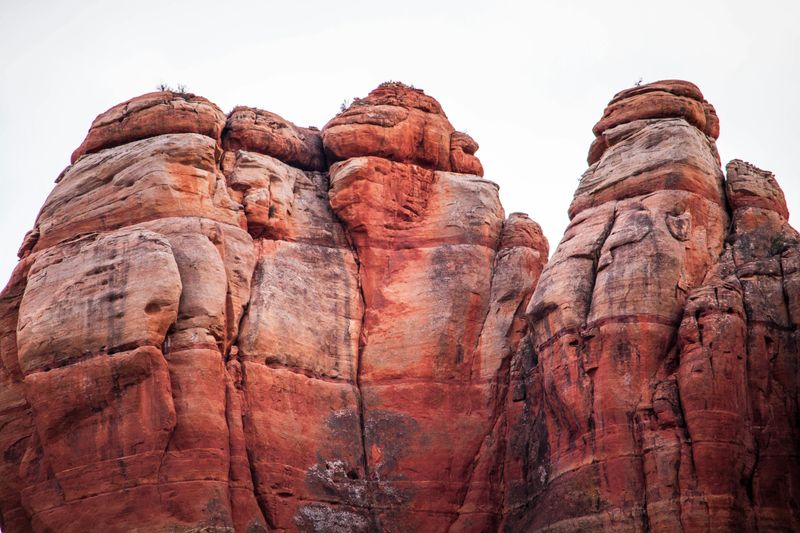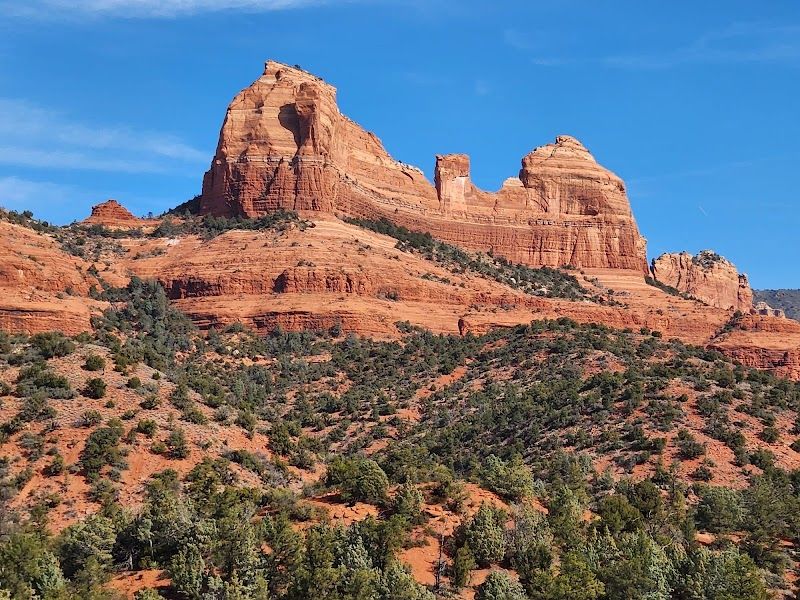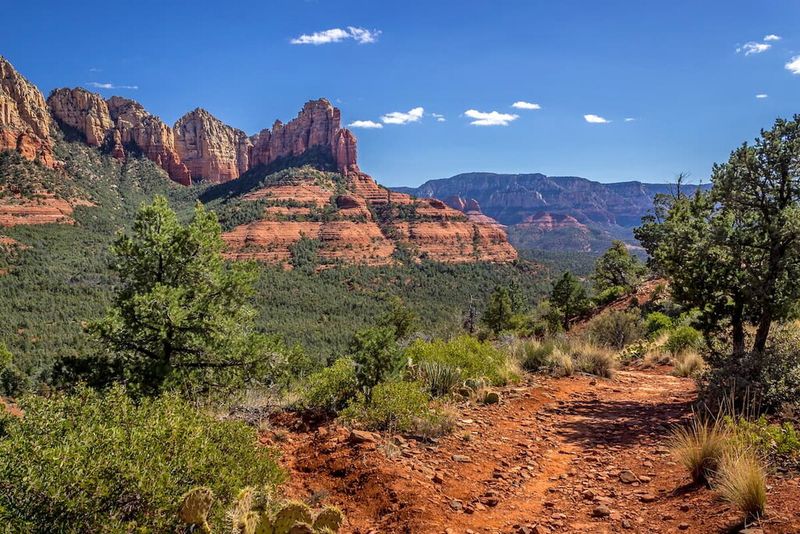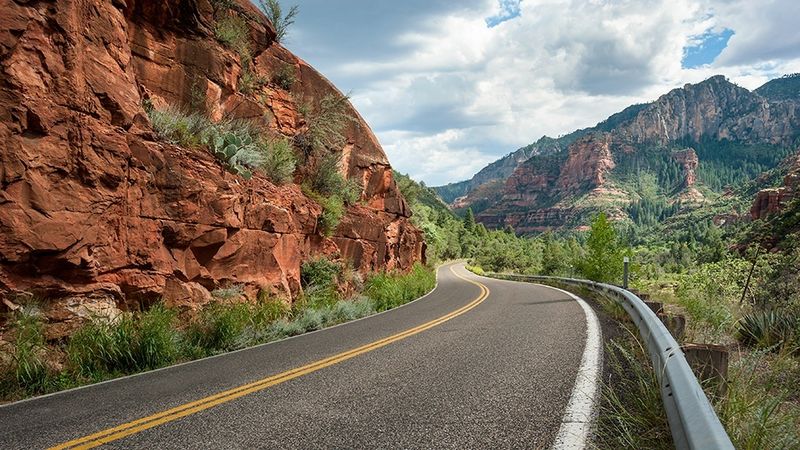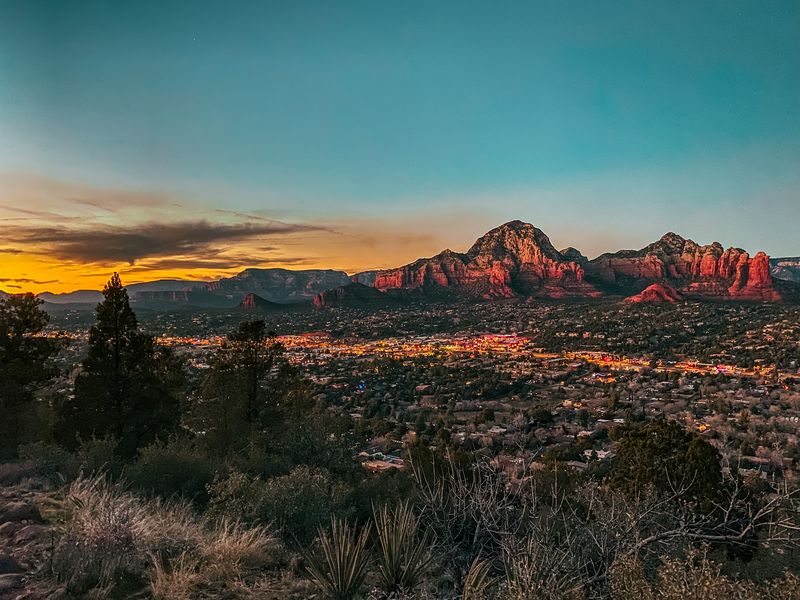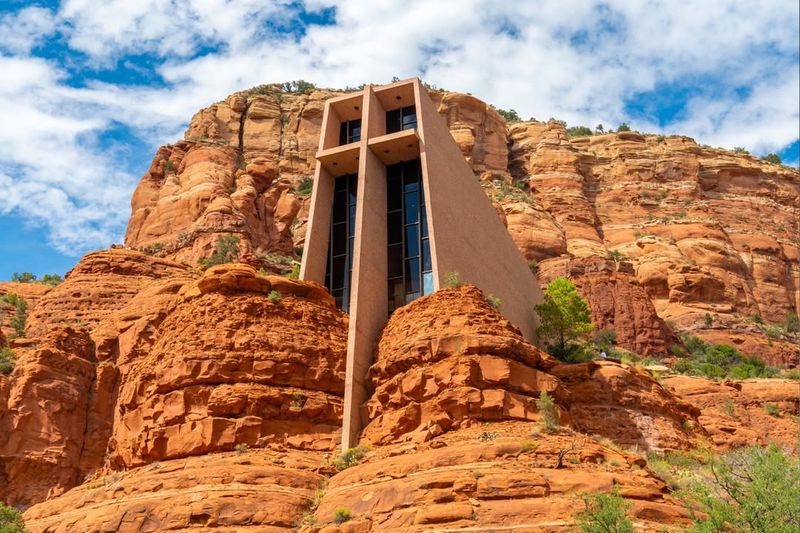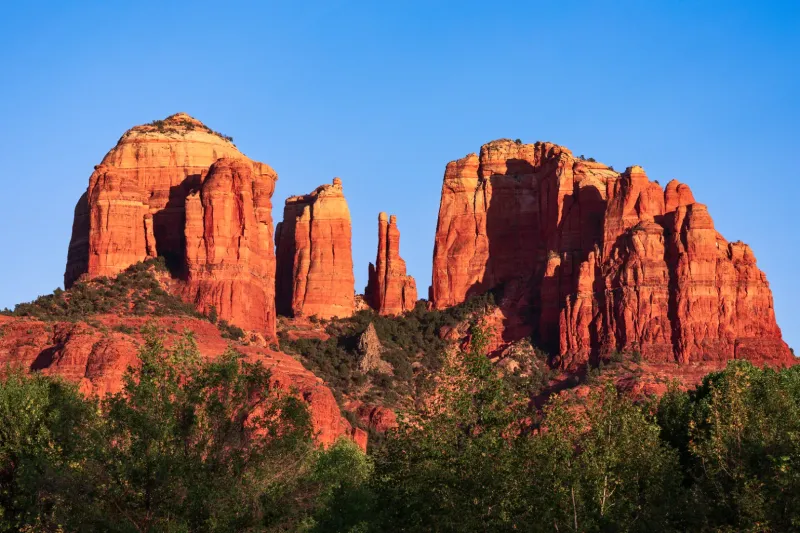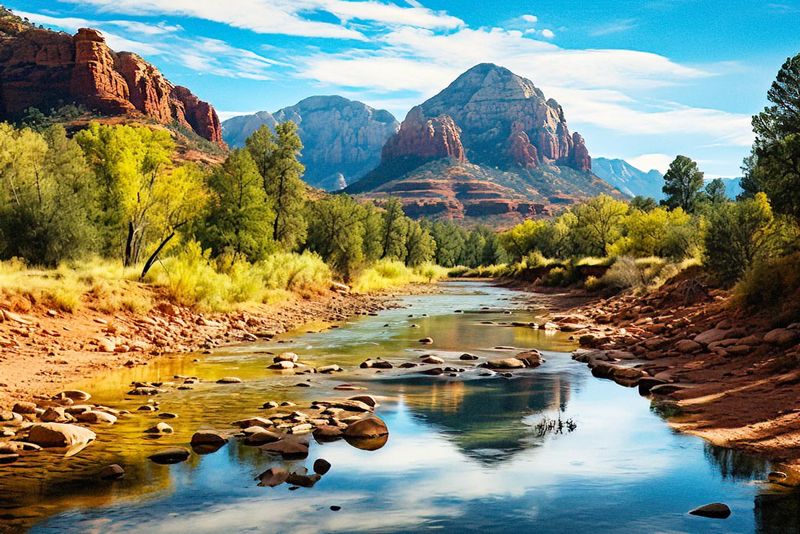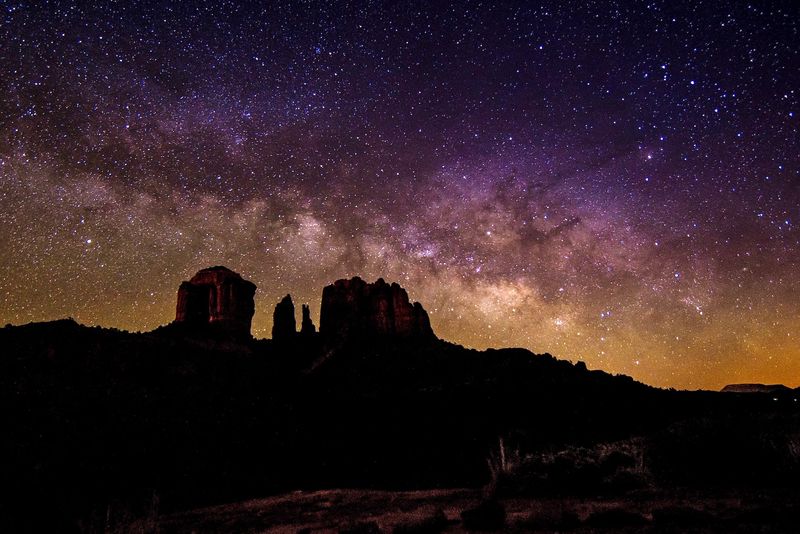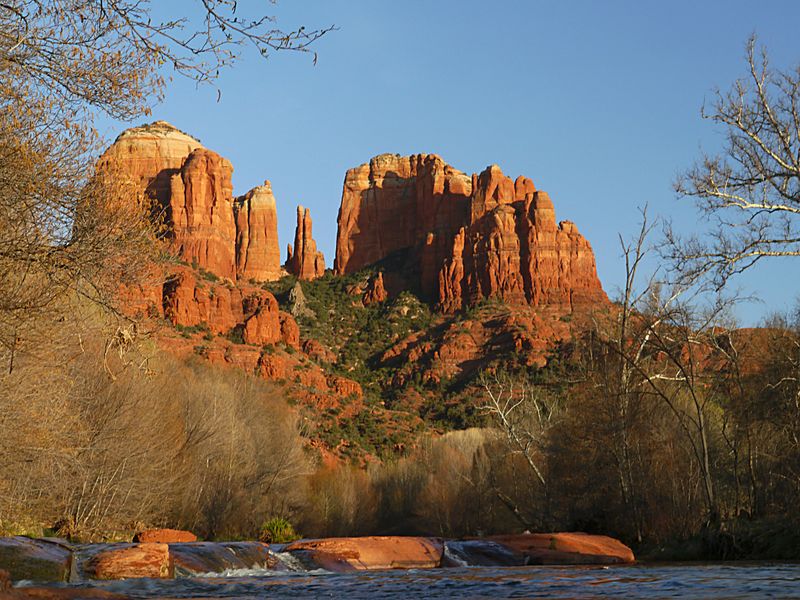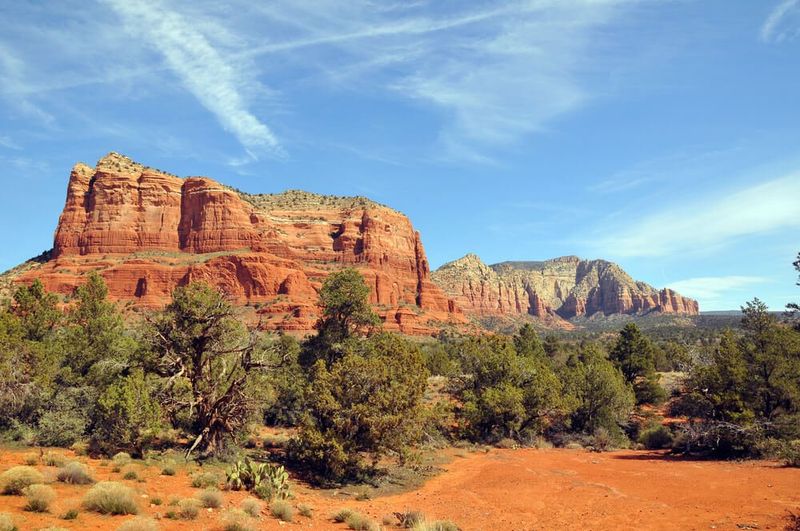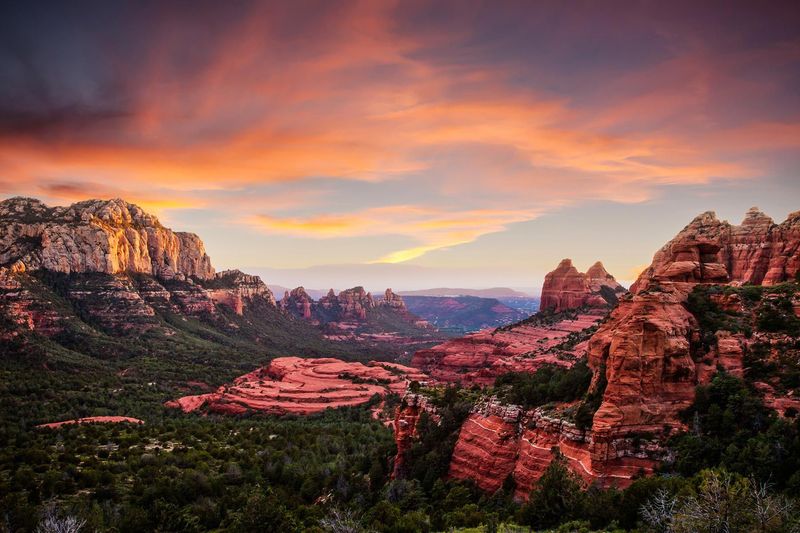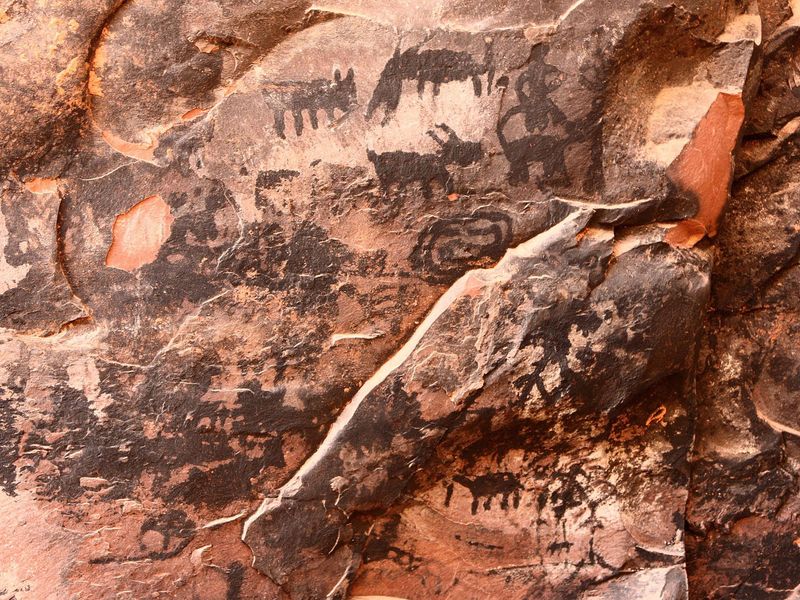With its towering crimson cliffs and luminous desert glow, Sedona looks like a science‑fiction set that somehow slipped into our world. Yet this dreamscape is real – perched in north‑central Arizona, just two hours north of Phoenix. From iron-rich sandstone that burns with color to canyons carved by ancient waters, every view feels impossible. Ready to see why this red‑rock wonderland defies expectations at every turn?
1. The Town Encircled by Red Giants
Sedona is cradled by colossal red sandstone formations whose color comes from iron oxide – red rust fused into ancient sediment. The stone ignites at sunrise and smolders at sunset, creating a natural light show that changes by the minute. Buttes, spires, and mesas ring the town like a monumental amphitheater, ensuring nearly every street ends in a view. Even simple errands come with jaw-dropping backdrops. The result is a daily spectacle that feels curated by the Earth itself – silent, grand, and overwhelming in the best way. It’s no wonder first-time visitors stop mid-sentence just to stare.
2. A Visual Feast With Iconic Landmarks
Cathedral Rock, Bell Rock, Courthouse Butte, and whimsical Snoopy Rock anchor Sedona’s skyline like myths turned to stone. Each formation is a character with a personality – angular, towering, playful, or serene – shifting moods with every cloud and sunbeam. Photographs barely capture the scale; in person, the cliffs loom larger, the colors richer, the textures sharper. Trails and overlooks frame these marvels from countless angles, inviting repeat visits at different times of day. Whether you’re hiking, driving, or simply gazing, the drama never lets up. It’s a place where the ordinary act of looking becomes an adventure.
3. Designed by Nature’s Transition Zone
Sedona sits precisely where high desert meets ponderosa forest, creating a rare ecological blend. Within minutes, you move from juniper-studded slickrock to shaded oak-lined creeks and cool mountain slopes. This collision of environments breeds surprising biodiversity and wildly varied scenery in a compact radius. It also makes the weather interesting: crisp evenings, bright sun, and four distinct seasons. The patchwork terrain yields everything from cactus blooms to pine-scented breezes. Few destinations offer such swift shifts in color, texture, and mood. For travelers, that means endless itinerary variety – without long drives or altitude shock.
4. Oak Creek Canyon’s Ribbon of Wonder
Highway 89A threads through Oak Creek Canyon, a serpentine drive that feels like a desert cousin to Yosemite. Sheer walls rise on both sides, while sycamores and cottonwoods line a sparkling creek below. Pullouts reveal pools, cascades, and photogenic bends perfect for picnics. The canyon’s microclimate cools summer air and amplifies fall color in dazzling golds. Slide Rock State Park adds a playful splash with natural water chutes. Every mile tempts a stop, and every stop tempts a longer stay. It’s a journey where the road is a destination in itself.
5. Sunsets That Set the Sky Ablaze
Iron-rich cliffs act like celestial mirrors in Sedona, catching the day’s last light and flinging it back in blazing reds, pinks, and golds. Even modest clouds ignite into painterly streaks, while the rocks glow as if lit from within. Favorite perches – Airport Mesa, Cathedral Rock saddles, and high desert knolls – fill with hushed onlookers. Cameras can’t quite bottle the atmosphere: the hush, the warmth, the slow-motion crescendo. Locals still pause for the show, because every evening writes a new script. In Sedona, sunset isn’t a time of day; it’s a ritual.
6. A Hiker’s Playground of 400+ Miles
From marquee routes like Cathedral Rock and Devil’s Bridge to quieter corridors in Secret Canyon, Sedona’s trail network spans hundreds of miles. Terrain ranges from slickrock scrambles and sandy washes to forested creekside paths. Wayfinding is straightforward, but the options are deliciously overwhelming. Early starts reward with cool temps and empty vistas; late afternoons bring warm light and long shadows. Respect desert essentials – water, sun protection, and good footwear – and the experience turns sublime. Whether you’re after big payoffs or meditative wanders, you’ll find a path that feels custom-made.
7. Chapel of the Holy Cross in the Rocks
Built into the sandstone in the 1950s, the Chapel of the Holy Cross seems to grow from the cliff itself. Clean modern lines contrast with rugged rock, creating a striking dialogue between faith and geology. Inside, a soaring window frames the red wilderness like a living mural. The approach road winds upward to unforgettable panoramas, accessible to casual visitors. It’s an architectural pilgrimage site as much as a spiritual one – quiet, contemplative, and photogenic. Even nonreligious travelers come away moved by the harmony of human vision and natural grandeur.
8. The Mystery of Vortex Sites
Airport Mesa, Bell Rock, Cathedral Rock, and Boynton Canyon are famed for so-called energy vortexes – places some believe amplify introspection and clarity. Scientific proof is elusive, yet the idea shapes Sedona’s wellness culture: yoga on slickrock, meditation under junipers, sound baths in intimate studios. Whether you feel tingles or simply calm, the settings are undeniably powerful. Open vistas quiet the mind; wind and light become teachers. Skeptics hike for views; seekers come for renewal. Either way, the experience leaves a lingering sense of spaciousness – inside and out.
9. When Sedona Was a Sea
Long before trail maps, this region lay beneath a warm, shallow sea. Layer upon layer of sediment settled, compacted, and dyed by minerals like iron, then uplifted by tectonics and sculpted by water and wind. The result: towering cliffs, cross-bedded patterns, and candy-striped strata that read like pages in a geologic novel. Standing before them, you’re witnessing deep time in bright color. Every ripple mark and ledge tells a story written over millions of years. It’s Earth history, presented in panoramic format – no textbook required.
10. Stars Unleashed in a Dark-Sky Town
Sedona’s dark-sky designation keeps artificial light low and night wonder high. Step outside on a clear evening and the Milky Way often arches over the red silhouettes. Astronomy tours bring telescopes to trailheads and mesas, guiding you through planets, nebulae, and constellations. Even casual stargazers can spot satellites and meteor streaks. The contrast between day’s blazing color and night’s velvet dome is dramatic. It’s a rare American town where the night sky is an attraction unto itself – and protected like a precious resource.
11. Small-Town Scale, Big-Time Awe
Despite global fame, Sedona remains a compact community of roughly ten thousand residents. That intimacy keeps traffic flowing to views rather than high-rises, and helps preserve a relaxed, village-like vibe. Local cafes and galleries sit minutes from trailheads, and conversations often start with, “Where did you hike today?” The scale also supports thoughtful planning – height limits, color palettes, and night-light rules that let nature lead. Visitors feel welcomed into a living landscape, not a sprawling resort machine. It’s a place where small-town rhythms and world-class scenery peacefully coexist.
12. Gateway to Grand Adventures Nearby
Sedona sits at the center of a ridiculously scenic radius. Within two hours lie the Grand Canyon’s chasms, Jerome’s cliff-hugging mining history, Flagstaff’s alpine forests, and the Verde Valley’s relaxed wine country. Day trips stack easily, yet returning to Sedona each evening feels like coming home to a private amphitheater. The town is both destination and basecamp, amplifying any itinerary. Whether you chase viewpoints, ghost towns, powdery snow, or tasting rooms, Sedona ties the journey together with unforgettable bookends of red rock light.
13. A Camera’s Dream Without Filters
Photographers rave about Sedona’s color palette: ruby cliffs, azure skies, emerald junipers, and liquid-gold sunsets. The interplay of clean desert air and reflective rock makes saturation pop naturally. Leading lines abound – curving trails, stacked ledges, and sinuous creeks. Sunrise brings soft gradients; blue hour paints moody silhouettes. Even smartphones capture magazine-worthy frames. For pros, it’s a compositional playground with endless foreground interest and dramatic backdrops. For beginners, it’s confidence-boosting beauty on easy mode. Either way, you’ll run out of memory before you run out of subjects.
14. Ancient Footprints in Stone
Sedona’s story predates modern roads by centuries. The Sinagua and other Native peoples left cliff dwellings, petroglyphs, and pueblos that still whisper across the canyons. Sites like Palatki, Honanki, and nearby Montezuma Castle reveal daily life elevated into the stone itself. Guided visits protect delicate art and contextualize rituals, trade, and migration. Respect is paramount – these are living cultural sites, not just ruins. Standing beneath soot-blackened alcoves, you feel history close enough to touch, yet deserving of quiet distance.
15. Otherworldly – and Absolutely Real
Between iron-lit cliffs, sculpted spires, whispering canyons, and star-punched nights, Sedona feels beamed in from another planet. Yet it’s disarmingly accessible – two hours from Phoenix, with trailheads steps from town. The geology reads like cosmic art; the atmosphere slows your thoughts to the pace of shadows. Visitors leave with dust on their boots and wonder in their eyes, asking the same question: How can this exist here? The answer is simple – Sedona is a geologic miracle generously shared.

